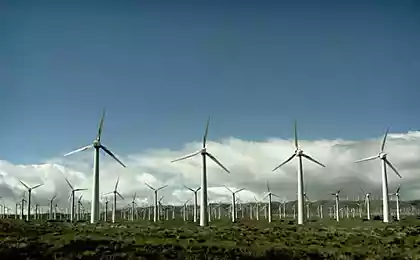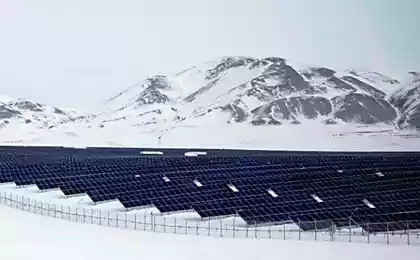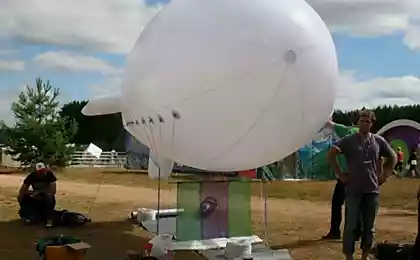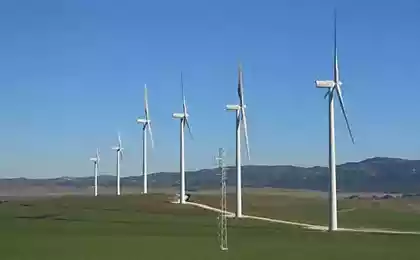625
How to transfer your house to renewable energy
If you have a vacation site that is not connected to the electricity grid, the wind turbine or solar panel can be your real salvation: the autonomy of electrical RES - their huge advantage. However, we must realize that the effectiveness of the equipment (both economic and industrial) strongly depends on the operating conditions.
Advantages and disadvantages of
Feature-RES installations in that they do not guarantee a constant volume of electricity production. In the summer because of high insolation more efficient solar panels in the winter due to heavy wind effectively windmills. Advantages of the solar panels is that they almost noiseless and does not require maintenance. In this mini-SES can not provide continuous production throughout the year, but their performance depends on the area of accommodation. In addition, the panels take up much space. Vetrogoneratorov advantages in that they can generate electricity clock. However, they are noisy, their performance depends on the wind speed at the location, that is, the availability of natural and artificial barriers and height blade assembly.

What To Consider
When choosing a model wind turbine must be considered the parameters of each of its key elements: the actual wind generator, battery pack, battery charge controller and inverter
. Given the fickle wind power to choose wind turbine with a power reserve based on windless days. It is necessary to calculate how much you need the battery to compensate for calm (in general, the larger the battery capacity, the better - because they are less discharged). For example, if the wind is blowing at a speed higher than 5 m / s (minimum effective wind speed) only two days a week, with consumption of 2 kW ∙ h per day (average daily consumption Russian citizen), you need a wind turbine, which is in two windy days will provide the house electricity and batteries zapasut 10 kW ∙ h. And for this we need 4-5 batteries with a capacity of 60 A / h.

the situation is somewhat more complicated with solar panels. Photovoltaic (solar) panels according to the material is divided into two types and have different efficiency. monocrystalline silicon panels have an efficiency of 17-20%, polycrystalline and amorphous silicon - less than 10%. Polycrystalline modules are cheaper, but they can not boast of high reliability: in a few years, their effectiveness will be reduced to zero
. The main thing to consider when choosing solar panels - is the quality of the elements in the module. There are three main quality grade solar cells. Grade A - after the accelerated aging test (PID test) reduction in the power elements is not more than 5%, that is, the elements continue to issue more than 95% of their nominal value
. In solar cells labeled Grade B after accelerated aging test power elements is reduced by no more than 30%, that is, the elements continue to issue more than 70% of its nominal value. Marking Grade C means that after the accelerated aging test power reduction elements is more than 30%, that is, the elements continue to issue at least 70% of their nominal value.
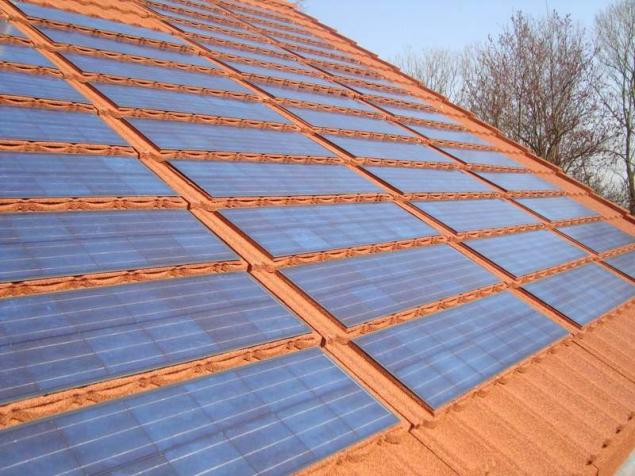
Secure the panels on the roof can be independently (though the company establishing such equipment usually offer service on its installation), the main thing - to direct them to the south, from which arrives to us more photons. It should be possible to tilt the panels.
Advantages and disadvantages of
Feature-RES installations in that they do not guarantee a constant volume of electricity production. In the summer because of high insolation more efficient solar panels in the winter due to heavy wind effectively windmills. Advantages of the solar panels is that they almost noiseless and does not require maintenance. In this mini-SES can not provide continuous production throughout the year, but their performance depends on the area of accommodation. In addition, the panels take up much space. Vetrogoneratorov advantages in that they can generate electricity clock. However, they are noisy, their performance depends on the wind speed at the location, that is, the availability of natural and artificial barriers and height blade assembly.

What To Consider
When choosing a model wind turbine must be considered the parameters of each of its key elements: the actual wind generator, battery pack, battery charge controller and inverter
. Given the fickle wind power to choose wind turbine with a power reserve based on windless days. It is necessary to calculate how much you need the battery to compensate for calm (in general, the larger the battery capacity, the better - because they are less discharged). For example, if the wind is blowing at a speed higher than 5 m / s (minimum effective wind speed) only two days a week, with consumption of 2 kW ∙ h per day (average daily consumption Russian citizen), you need a wind turbine, which is in two windy days will provide the house electricity and batteries zapasut 10 kW ∙ h. And for this we need 4-5 batteries with a capacity of 60 A / h.

the situation is somewhat more complicated with solar panels. Photovoltaic (solar) panels according to the material is divided into two types and have different efficiency. monocrystalline silicon panels have an efficiency of 17-20%, polycrystalline and amorphous silicon - less than 10%. Polycrystalline modules are cheaper, but they can not boast of high reliability: in a few years, their effectiveness will be reduced to zero
. The main thing to consider when choosing solar panels - is the quality of the elements in the module. There are three main quality grade solar cells. Grade A - after the accelerated aging test (PID test) reduction in the power elements is not more than 5%, that is, the elements continue to issue more than 95% of their nominal value
. In solar cells labeled Grade B after accelerated aging test power elements is reduced by no more than 30%, that is, the elements continue to issue more than 70% of its nominal value. Marking Grade C means that after the accelerated aging test power reduction elements is more than 30%, that is, the elements continue to issue at least 70% of their nominal value.

Secure the panels on the roof can be independently (though the company establishing such equipment usually offer service on its installation), the main thing - to direct them to the south, from which arrives to us more photons. It should be possible to tilt the panels.
How birth order of children affects their fate
The downside Saver: Do not pull on another of its energy!





